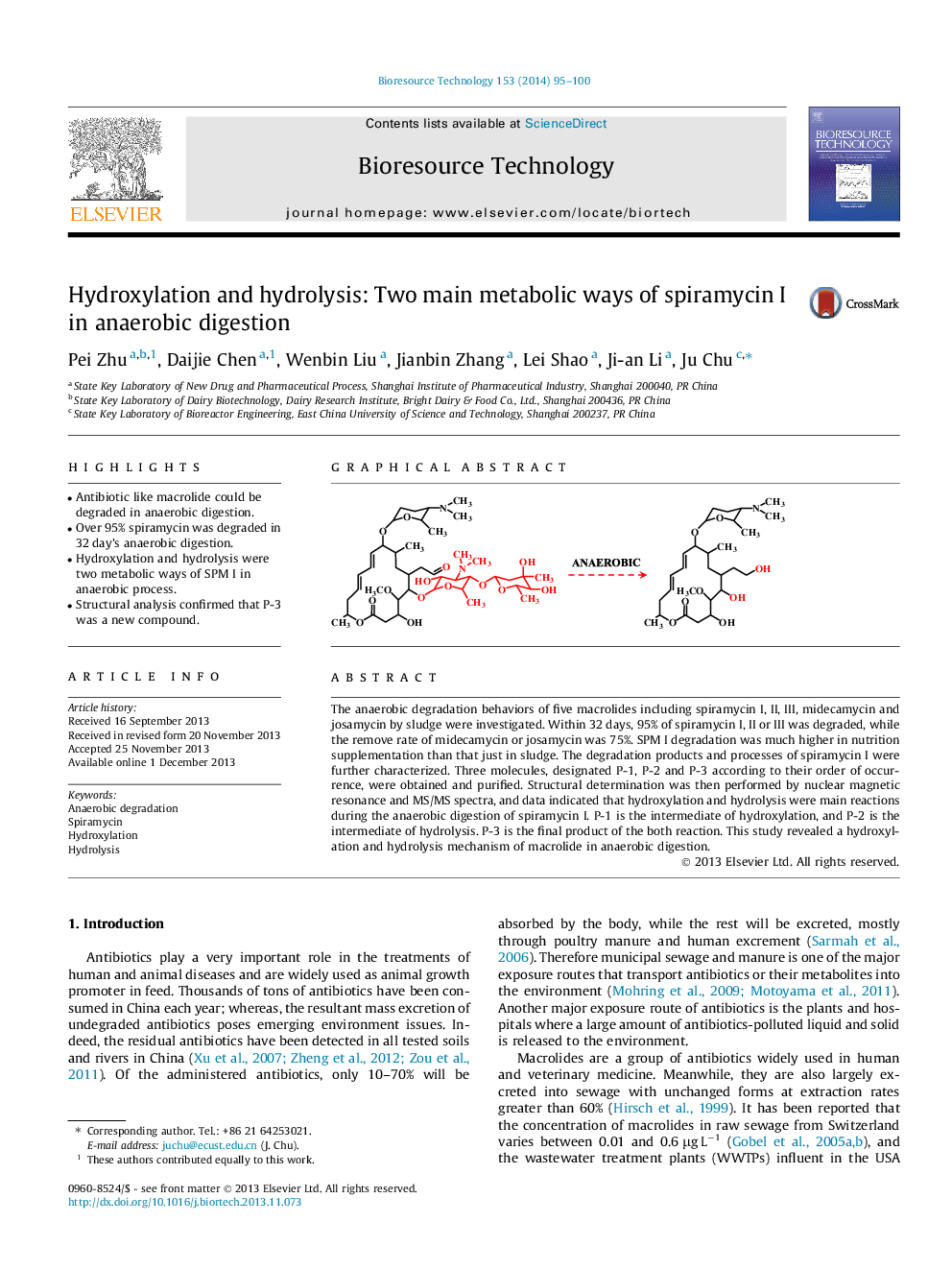| Article ID | Journal | Published Year | Pages | File Type |
|---|---|---|---|---|
| 680734 | Bioresource Technology | 2014 | 6 Pages |
•Antibiotic like macrolide could be degraded in anaerobic digestion.•Over 95% spiramycin was degraded in 32 day’s anaerobic digestion.•Hydroxylation and hydrolysis were two metabolic ways of SPM I in anaerobic process.•Structural analysis confirmed that P-3 was a new compound.
The anaerobic degradation behaviors of five macrolides including spiramycin I, II, III, midecamycin and josamycin by sludge were investigated. Within 32 days, 95% of spiramycin I, II or III was degraded, while the remove rate of midecamycin or josamycin was 75%. SPM I degradation was much higher in nutrition supplementation than that just in sludge. The degradation products and processes of spiramycin I were further characterized. Three molecules, designated P-1, P-2 and P-3 according to their order of occurrence, were obtained and purified. Structural determination was then performed by nuclear magnetic resonance and MS/MS spectra, and data indicated that hydroxylation and hydrolysis were main reactions during the anaerobic digestion of spiramycin I. P-1 is the intermediate of hydroxylation, and P-2 is the intermediate of hydrolysis. P-3 is the final product of the both reaction. This study revealed a hydroxylation and hydrolysis mechanism of macrolide in anaerobic digestion.
Graphical abstractFigure optionsDownload full-size imageDownload as PowerPoint slide
